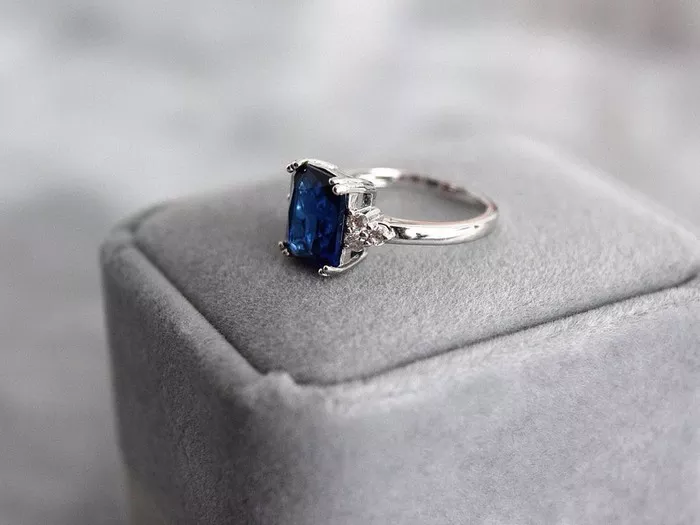The act of proposing marriage with a ring is a cherished tradition that has captivated hearts and minds for centuries. From its humble beginnings in ancient civilizations to its modern-day manifestations, the custom of offering a ring as a symbol of love and commitment has evolved in intriguing ways. In this article, we delve into the historical origins, cultural evolution, symbolism, and contemporary practices surrounding the tradition of proposing with a ring.
Historical Origins
The tradition of proposing with a ring has deep roots that stretch back thousands of years. One of the earliest known instances of ring symbolism can be traced to Ancient Egypt, where rings were considered symbols of eternity due to their circular shape, which has no beginning or end. Egyptians exchanged rings made from materials such as leather, bone, or reeds as tokens of love and commitment.
In Ancient Rome, betrothal rings known as “annulus pronubus” were exchanged during marriage ceremonies. These rings were typically made of iron, symbolizing strength and permanence. The Roman poet Pliny the Elder wrote about the custom of wearing a ring on the fourth finger of the left hand, believing that a vein, called the “vena amoris” or “vein of love,” ran directly from this finger to the heart, further emphasizing the romantic significance of the ring.
Cultural Evolution
As civilizations evolved, so too did the practice of proposing with a ring. In medieval Europe, rings adorned with precious stones became popular among the nobility as symbols of wealth and status. The tradition of offering a ring as part of a marriage proposal gained prominence during the Renaissance period, with elaborate courtship rituals becoming more common among the upper classes.
During the Victorian era, the exchange of engagement rings became more widespread among all social classes. The discovery of diamonds in South Africa in the late 19th century led to an increase in the popularity of diamond engagement rings, thanks in part to a successful marketing campaign by diamond company De Beers, which famously coined the phrase “A Diamond is Forever” in 1947, solidifying the association between diamonds and eternal love.
Proposal Rituals
In traditional Western culture, the act of proposing marriage often involves getting down on one knee, known as genuflection, and presenting an engagement ring to one’s partner. This gesture is typically accompanied by heartfelt words expressing love and a desire for a future together. The moment of proposing with a ring is often considered one of the most significant milestones in a romantic relationship, symbolizing a commitment to lifelong partnership.
Symbolism of the Ring
The ring itself holds deep symbolism in the context of love and commitment. Its circular shape represents eternity and the unending nature of the bond between two people. The precious metal from which it is crafted symbolizes the enduring strength of the relationship, while gemstones, particularly diamonds, are often chosen for their brilliance and rarity, signifying the unique and precious nature of the love being celebrated.
In addition to its romantic symbolism, the ring also serves as a tangible reminder of the promises exchanged during the proposal, acting as a physical manifestation of the commitment between partners.
Modern Practices
While many aspects of the traditional proposal ritual endure, contemporary practices surrounding engagements and marriage proposals have evolved in response to changing social norms and cultural shifts. One notable trend in recent years is the increasing acceptance of women proposing to men, challenging traditional gender roles and empowering individuals to express their love and commitment in ways that feel authentic to them.
Another significant development in modern proposal customs is the emergence of engagement rings for men. Once considered unconventional, men’s engagement rings have gained popularity as couples seek to redefine traditional gender norms and celebrate equality in their relationships. These rings often feature sleek and minimalist designs, crafted from materials such as tungsten, titanium, or platinum.
Gender Roles
The shift in gender roles surrounding marriage proposals reflects broader societal changes toward greater equality and inclusivity. While the traditional image of a man down on one knee presenting a ring to his beloved remains deeply ingrained in popular culture, many couples are choosing to approach proposals in ways that reflect their individual preferences and values.
For some couples, the act of proposing with a ring symbolizes not only a commitment to each other but also a commitment to challenging outdated notions of gender and romance. Whether it’s a woman proposing to her partner, a same-sex couple exchanging rings, or a non-binary individual expressing their love in their own unique way, the tradition of proposing with a ring continues to evolve to encompass a diverse range of love stories.
In conclusion, the tradition of proposing with a ring has a rich and storied history that spans cultures and civilizations. From its ancient origins in Ancient Egypt to its modern-day manifestations, the act of offering a ring as a symbol of love and commitment remains a cherished tradition that has endured the test of time. As society continues to evolve, so too will the customs and rituals surrounding marriage proposals, ensuring that the tradition of proposing with a ring remains as timeless and meaningful as ever.

